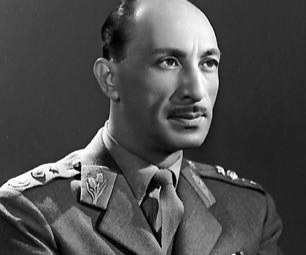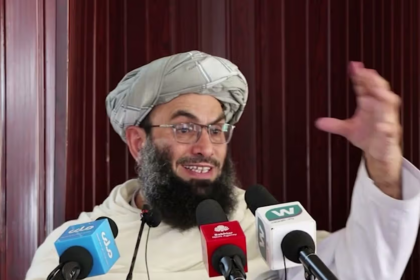RASC News Agency: While Persian has historically been the official and communicative language among the diverse languages in the country throughout historical and Islamic periods, spoken by over 68.5% of the population, it has not posed any issues in the social interactions of the people in this geography with government authorities; instead, it has formed a bond of connection and unity among various elements of the population. However, MohammadZai rulers since the time of Sher Ali Khan have initiated linguistic discrimination and supremacy, pursued by different methods by the country’s rulers.
Ahmad Shah Abdali, despite being Pashtun, composed Persian poetry. Understanding the true nature and essence of the Persian language, he preserved it as the official and governmental language, but his successors, from the Sadozai rulers to the Mohammadzai emirs, began erasing the language resentfully.
Due to its melodious nature, Persian, alongside the term “Dari,” meaning “Persian,” has been used, referred to as “Farsi-Dari,” holding a unique characteristic as the second language with credibility in the Islamic world and the historical civilization and as the shared heritage of all ethnic groups in the country. Persian witnessed its first linguistic discrimination by the power-hungry Afghanistan rulers during Habibullah Khan’s time when Mahmmod Tarzi, as the editor of Siraj al-Akhbar, assumed power in the Amir Habibullah and Amir Amanullah governments.
Mahmmod Tarzi considered Persian a language of poverty and a relic of Ahmad Shah’s rule. He wrote in Siraj al-Akhbar: “We, the Afghan nation, and the sacred soil of our beloved country are called Afghanistan. Just as we have special customs and manners, we possess a special language called ‘Afghani (Pashto).'”
Persian, the legacy of the empires of the Pishdadian, Kayanian, Achaemenid, Ashkanian, Sassanian, and Kushanian, spread the language from the time of the Taheri rulers and Saffarids to the Samanids, Ghaznavids, Ghurids, Timurids, Khwarazm Shahs, Seljuks, Shibanis, Lodis, Suris, Baburs, and Safavids from Takharestan and Balkh to the west and east, to the borders of China and Delhi and Bengal in the Indian subcontinent, Azerbaijan, Turkey, expanding the language in the vast region of Greater Khorasan. However, Mahmmod Tarzi, with his misguided perspective, planted the seeds of hypocrisy and discord against the Persian language in the minds and thoughts of the political leaders of the ruling system in Afghanistan, putting this historical and civilizational language of Greater Khorasan in the face of political challenges.
During the rule of the treacherous Afghanistan monarch, Nader Khan, Mohammad Gul Mohmand initiated movements to promote Pashto language and eliminate the Persian language not only from government offices but also from educational institutions, houses, and markets.
Officially, Nader Khan sent Mohammad Gul Mohmand to the northern provinces to implement the theory of ethnic and linguistic superiority, and in the mission, he preferred Pashto speakers. According to Afghanistan contemporary history, Mr. Mohmand forced Persian and Turkish language speakers to write their documents in Pashto, and he did not pay attention to writings in Persian that came to him.
According to this Afghanistani historian, Mr. Mohmand, in pursuit of his language superiority goals, relocated numerous Pashtun families from outside Afghanistan’s borders to the north of the Hindu Kush by offering them land and other incentives, while also prioritizing Pashto speakers in his mission.
In the historical account, following the initiation of linguistic chauvinism by Tarzi and Mohammad Gul Mohmand in the governments of Habibullah Khan, Amanullah, and Nadir Shah during the reigns, particularly under the leadership of Sardar Hashim Khan, a tribal and political approach was taken towards Persian language. On march 3, 1937, a decree was issued under the name of Nadir Shah ordering education and instruction throughout the country in Pashto by the appearance of Shah. Following the aforementioned decree, when Sardar Mohammad Naeem assumed the Ministry of Education, Pashto was forcibly introduced as the language of teaching and education instead of Persian across Afghanistan. The literary association in the Ministry of Education was renamed to “Pashto Tolana” or Afghan Academy. According to contemporary Afghanistan history, after Hitler, the leader of the Nationalist German Workers’ Party, seized power and propagated racial superiority theory, some Afghan or pashtun personalities, including Mohammad Daoud Khan, Nephew of Hashim Khan, adopted Mohammad Gul Mohmand’s theory regarding the promotion of Pashto language and expulsion of other languages. After they polished and highlighted it with Hitler’s influence, it became the new cultural policy of the Shah’s monarchy. In 1937 AD, during the reign of Shah Zahir, a decree was issued regarding compulsory learning of Pashto in the Eslah newspaper. All government officials were obligated to “learn Afghani Language or Pashto during a three-year period and use it in conversation and writing.”
Since the policy of national and linguistic superiority instigated by Shah Zahir led to increased opposition from non-Pashtun ethnic groups regarding the learning and use of Pashto, the forced teaching of Pashto proved unsuccessful. The government was compelled to extend it for another three years. As it still did not yield results, the process was extended again. Once more, it was ordered that “teaching in all schools of the country be shifted from Persian to Pashto, and Persian-speaking teachers undergo Pashto courses.” Consequently, in provinces where neither teachers nor students understood Pashto, teaching Pashto books became the norm, and at the end of the year, an examination in Pashto was conducted.
According to Afghanistan in the past five centuries: “Although there is no accurate measure of the damage caused by this to the spread of knowledge and education in the country, it can be stated without exaggeration that, as a result, Afghanistan’s knowledge lagged behind for decades, and non-Pashtun youth were deprived of accessing the treasury of Persian literature, which was a major pillar of their culture, leaving them illiterate.”
The methods of imposing Pashtun identity on the Afghanistani ethnic groups, such as forcing Pashto education and depriving Persian speakers of the use of their authentic cultural terms in government offices, extended to the point where in the 1965 constitutional law, the name of the Persian language changed to Dari. That is, Persian was taken from this language, and instead of it, Dari, which was the adjective of this language, was put on Persian as a noun. Although in Article 3 of that constitution, two official languages, Dari and Pashto, were approved and approved, in Chapter 3, under the title of the fundamental rights and duties of the people regarding the languages of Afghanistan, only Pashto was introduced as the sole national language.
Then, in Article 35 of the constitution, it was written that: “The government is obligated to develop and strengthen effective programs for the development of the national Pashto language.” The change of the name of the Persian language to Dari in the 1965 constitution and the introduction of the Pashto language as the only national language of Afghanistan, and then the distinction and discrimination in strengthening Dari and Pashto, presented the first major challenge to the Persian language that officially and legally formed the policies and government stance of the monarchy of Zaher Shah.






